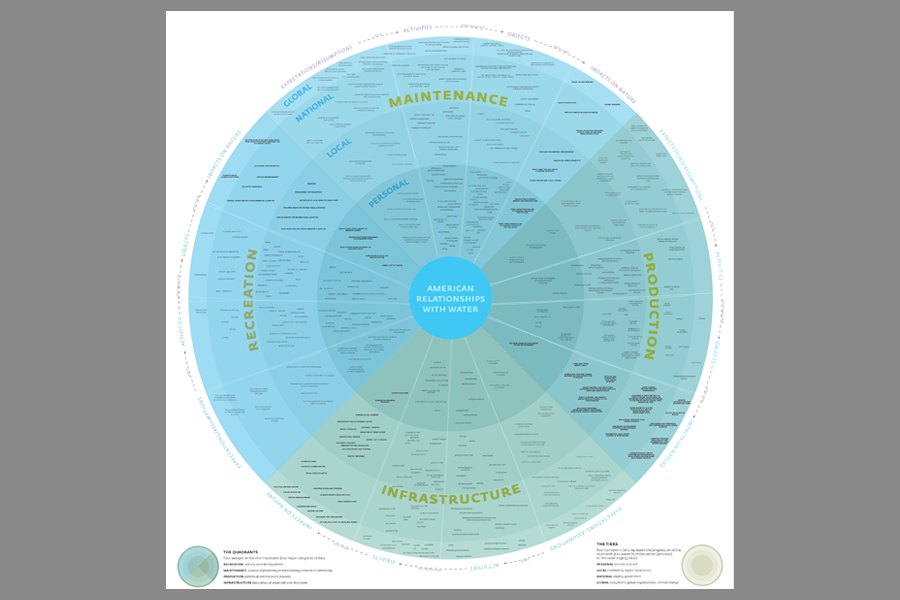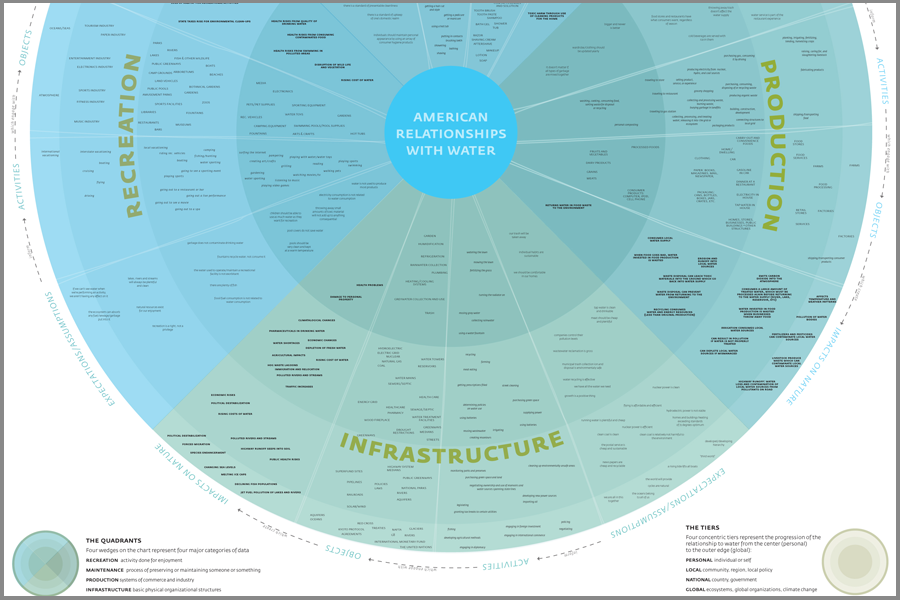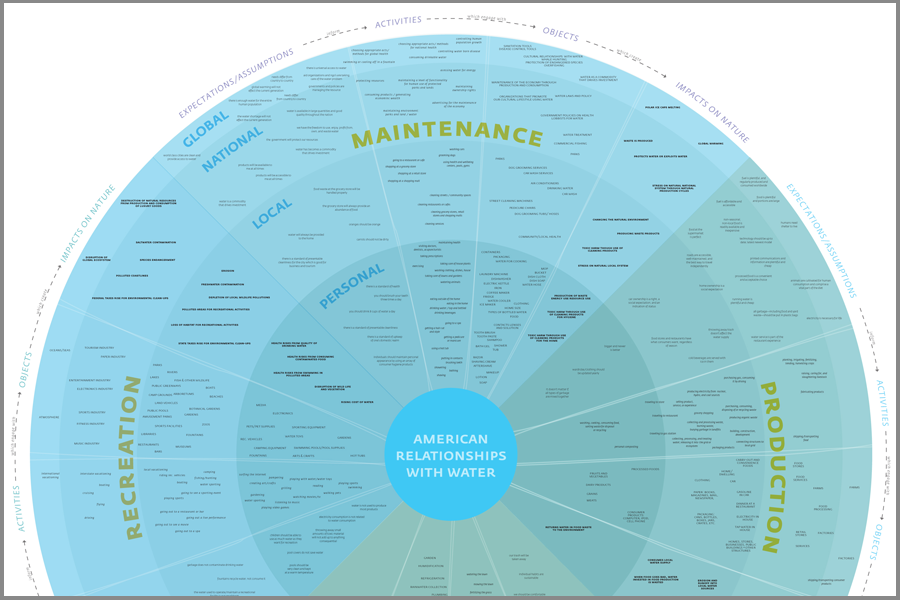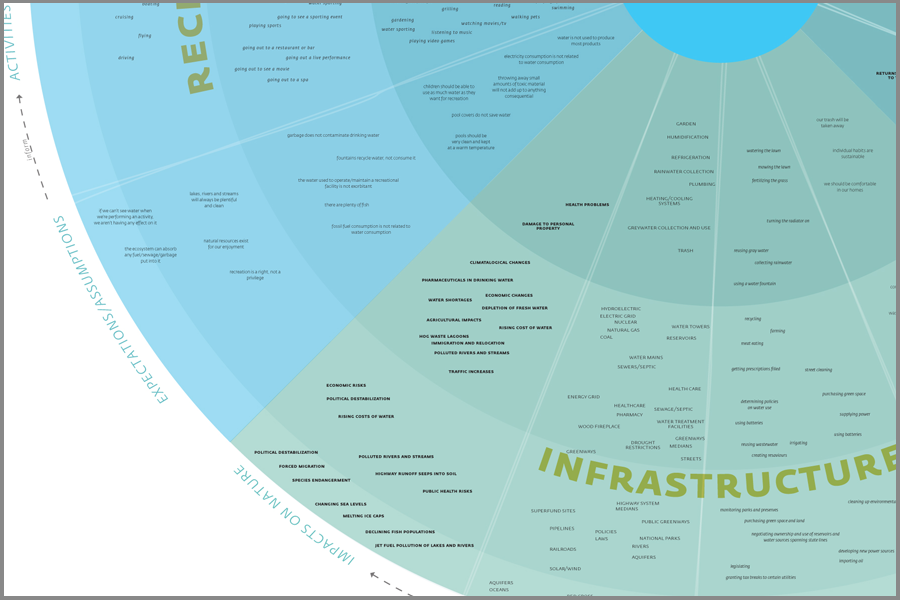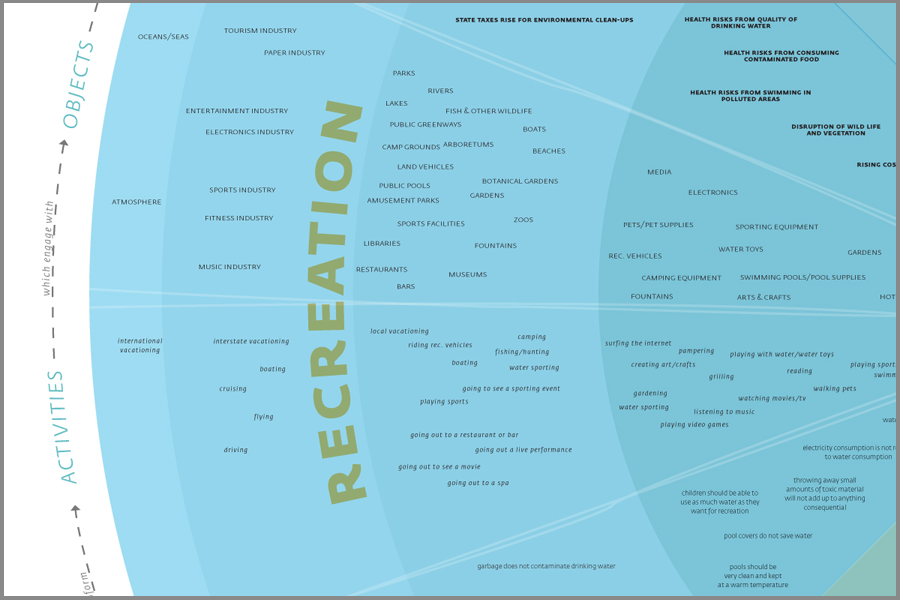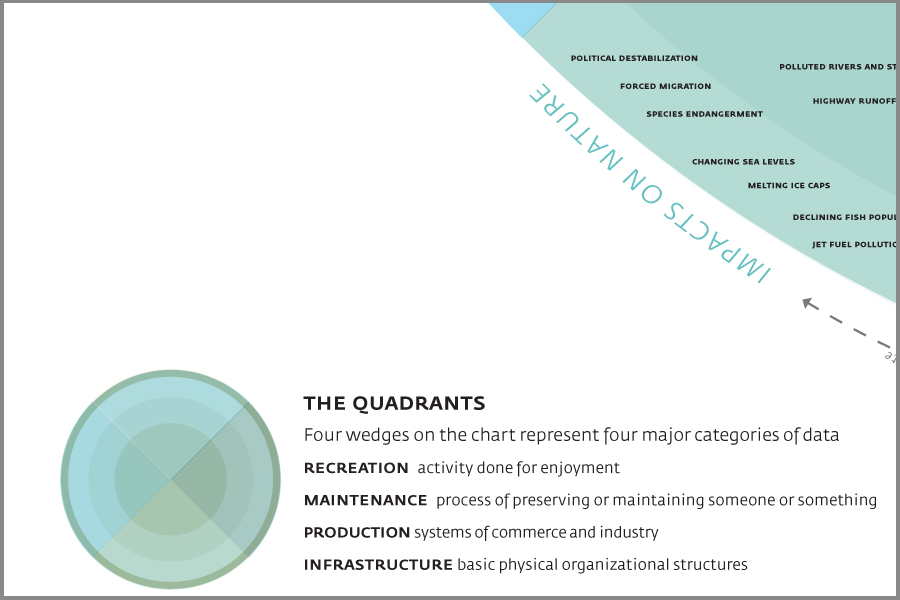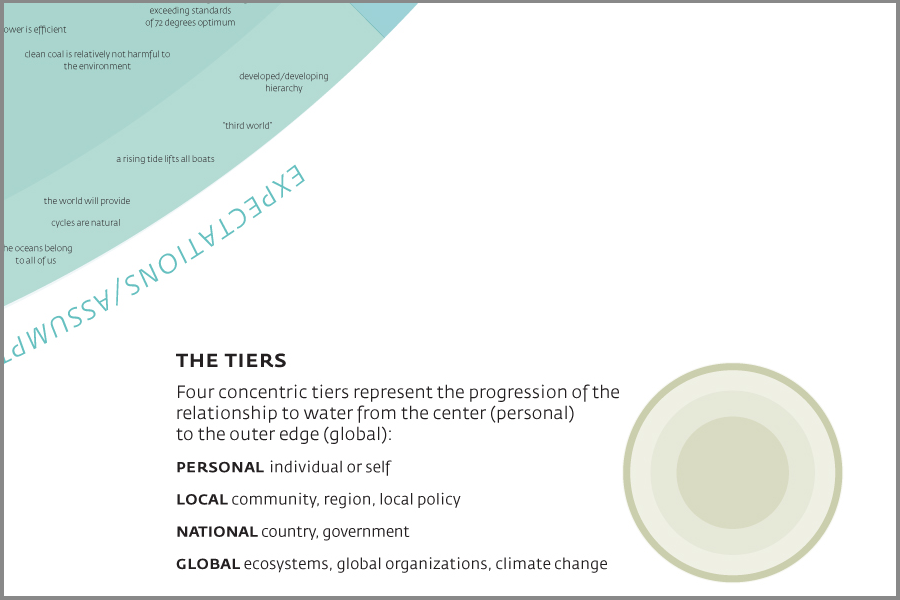Through brainstorming sessions and individual research, seven of my classmates and I parsed out ways in which humans interact and effect water. Through our discussions and mapping, we created the following argument:
Most western cultures take water for granted, especially water they cannot see. “Virtual Water” is the water invested in the production of goods and services; invisible water that we unknowingly consume.
We can improve the problem of our water supply by intervening in obvious areas of water use. We must also acknowledge, however that many activities profoundly influence the quantity and quality of water in ways not apparent to the average consumer.
As designers, our task is to reveal these hidden connections so that people are aware of their comprehensive water footprint and the true cost and value of water.
WE ARGUE THAT:
• Water resources are limited.
• Human activities involve both direct and indirect uses of water.
• Human activities, therefore impact more water than we think.
• By shedding light on invisible uses of water, we help people to make more informed choices that conserve water.
[Invisible Water project created by NCSU graduate students: Brooke Chornyak, Tony Fugolo, Lincoln Hancock, Sam Kim, Kelly Murdoch-Kitt, Dan McCafferty, Robert Ruehlman, and Liese Zahabi]

